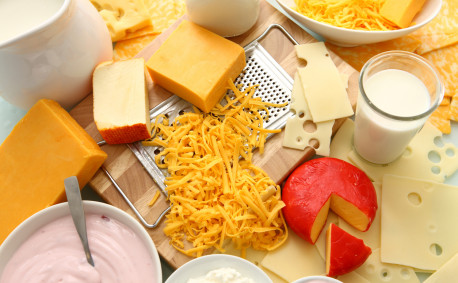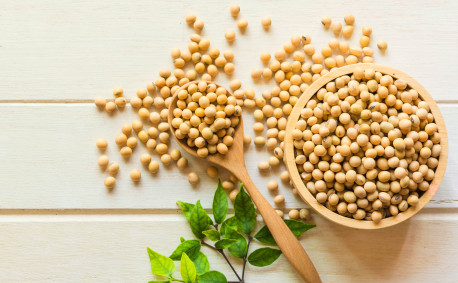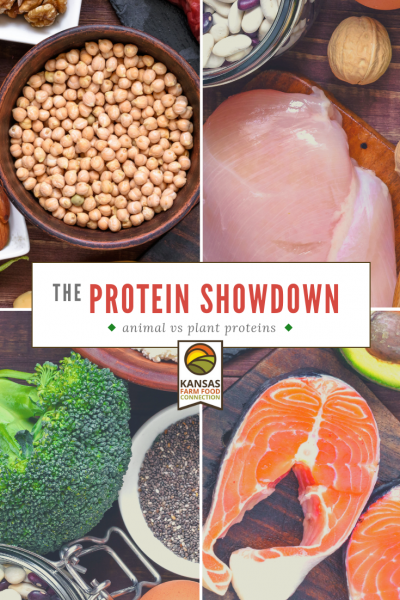Animal Protein vs Plant Protein
Here’s a question we get a lot: Which is better, animal protein or plant protein? Our short answer is, both! Including both sources of protein is crucial in a well-balanced diet. We’ll break down why.
What Is Protein?
First, here’s a quick primer on protein. This macronutrient plays an important role in keeping us healthy. It’s the building block for blood, skin, muscles and bones to grow and repair themselves.
Protein breaks down into amino acids. There are about 20 different amino acids, nine of which our bodies can’t produce on their own. We have to get those nine amino acids (called essential amino acids) from our food. Foods with all nine of the essential amino acids are called complete proteins.
Animal Proteins
Animal proteins — think beef, pork, poultry, fish, eggs and dairy products — are complete proteins. They also pack more protein per calorie than plant proteins do.
A quick example is lean beef. A three-ounce serving of lean beef contains 25 grams of protein and has 170 calories. Compare that to quinoa, which would require three cups to get to 25 grams of protein, at a hefty 666 calories.
Plant Proteins
Plant proteins — think nuts, grains, beans and legumes — are usually not complete proteins. The one exception is soybeans. Soybeans have all nine of the essential amino acids.
Take edamame — young soybeans, shelled or still in the pod — for instance. A one-and-a-third cup serving packs 25 grams of protein at 254 calories. Not too bad compared with the lean beef!
Although it seems like animal-based foods are the clear winners in the protein debate, there’s more to eating healthfully than protein alone. Both animal and plant foods contain a wealth of other nutrients you need to be on the right track.
The Big Nutritional Picture
If you’re thinking about focusing solely on one type of food over another, you’re missing out. The important thing is to get a mix of well-balanced proteins, fats and carbohydrates. Plants and animals are both a big part of that.
Animal-based foods can contain micronutrients like various B vitamins, vitamin D, iron and zinc.
- Beef contains vitamins B6 and B12, heme iron (which has extra benefits over regular iron), zinc, niacin, riboflavin, selenium, choline and phosphorus.
- Pork contains vitamins B6 and B12, iron, zinc, niacin, riboflavin, phosphorus, potassium, magnesium and thiamin.
- Dairy contains vitamins B12, A and D, plus zinc, potassium, magnesium, choline, phosphorus, selenium and — of course! — calcium.
Plant-based foods can contain fiber, antioxidants and a variety of vitamins and minerals.
Take those soybeans we talked about earlier. In addition to being a complete protein, they’re also a good source of fiber, iron, calcium, magnesium, potassium, zinc and B vitamins.
Now consider a few other crops grown right here in Kansas.
- Wheat contains carbohydrates and is rich in fiber. Wheat also has protein, antioxidants, vitamin B9, phosphorus, selenium, manganese and copper.
- Sorghum, which is becoming more popular to eat as a side dish (try pearled sorghum for a hearty alternative to rice or quinoa), contains carbohydrates and protein, plus vitamin B6, iron, niacin, magnesium and phosphorus. Some varieties of sorghum are also rich in antioxidants.
- Although most of the corn grown in Kansas is field corn for animal feed (not the kind of corn we eat), corn contains carbohydrates, including fiber, and protein. Popcorn has zinc, phosphorus, magnesium, copper and manganese. Sweet corn (the kind we eat) has vitamins B5, B6 and B9, niacin and potassium.
So, instead of asking yourself whether you should eat animal proteins or plant proteins, find room in your diet for both for well-rounded nutrition.





